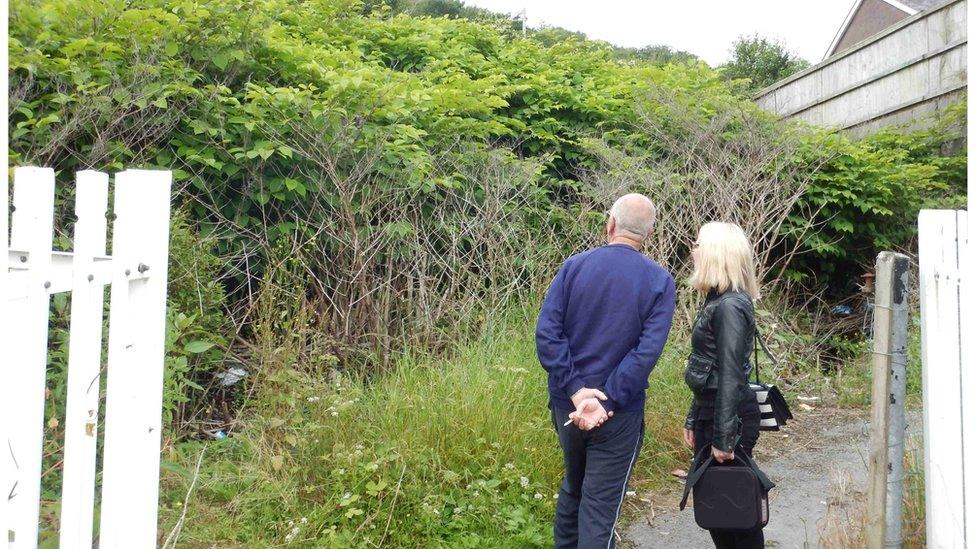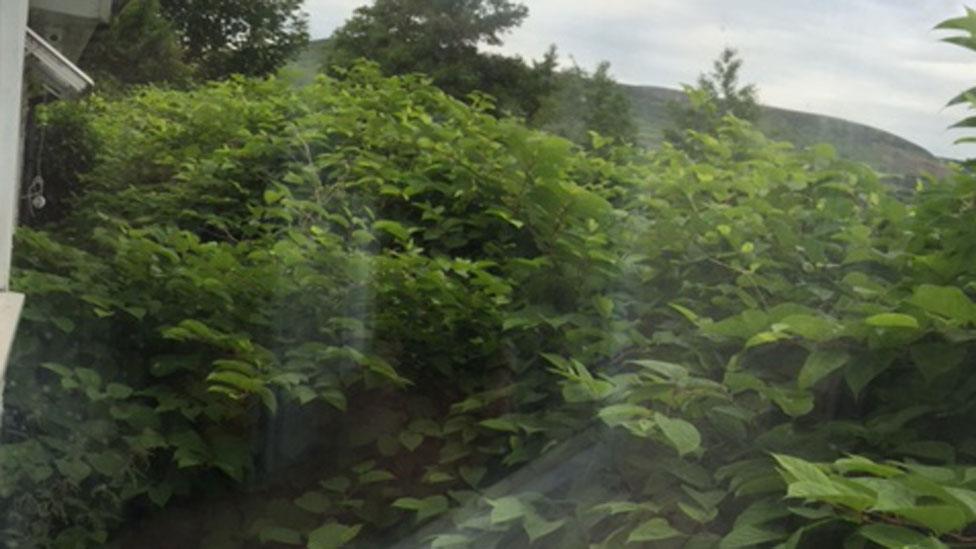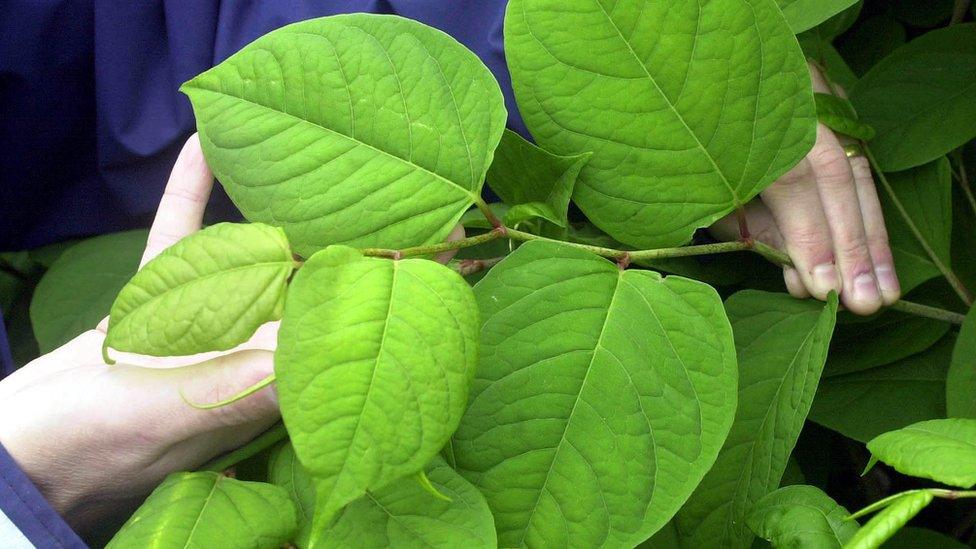Knotweed railway case won by Maesteg homeowner
- Published

A homeowner whose bungalow is towered over by Japanese knotweed on a railway line has won a four-year legal fight for compensation by Network Rail.
Robin Waistell claimed he was unable to sell because the rail body had ignored requests to tackle the invasive weed on the bank behind his home in Maesteg.
The case was seen as a likely test for homeowners whose property is blighted by knotweed on railway embankments.
Network Rail said it would be "reviewing the judgement in detail".
It is understood the rail infrastructure body was refused immediate leave to appeal against the ruling.
Network Rail faces potential legal costs running into six figures after losing the case in Cardiff bought by Mr Waistell and a neighbour.
Widower Mr Waistell, 70, had moved to the bungalow from Spain after his wife died.
He had hoped to return to the sun, but found his property sale stymied by the knotweed growing on adjacent Network Rail land and was asking for £60,000 compensation for loss of value.

The view from Robin Waistell's rear window
He was awarded £15,000, with a third of that to pay for an insurance-backed guarantee on a herbicide programme to tackle the knotweed.
He told BBC Radio Wales: "We've won the case. I'm pleased with the judgement, it's the amount I'm disappointed with.
"It's gone on for some four years now. Some days it really does get you down. But then you just pick yourself up and kick off again.
"I know there are so many people on the railway lines, and the road ways, they just seem to accept that it (Japanese knotweed) is there. But there is a lot of help if they decide to look for it. It is a horrible, horrible plant."
A spokesperson for Network Rail said: "We are aware of the outcome in this case and we are currently reviewing the judgement in detail."
A programme releasing insects brought in from Japan to bring the plant under control is under way in south Wales
Japanese knotweed was first found in the wild in Wales in the 1880s in Maesteg.
It was introduced by the Victorians for horticulture. Its 3-4m (10-13ft) stems, ornamental leaves and clusters of white flowers made it an attractive option for gardens.
But now the plant is prevalent throughout the UK and not only causes great damage to plant biodiversity, it is also causing problems for hard structures, including buildings and flood defences.
In 2015 UK ministers accepted a national eradication programme would be "prohibitively expensive" at £1.5bn.
- Published23 July 2016
